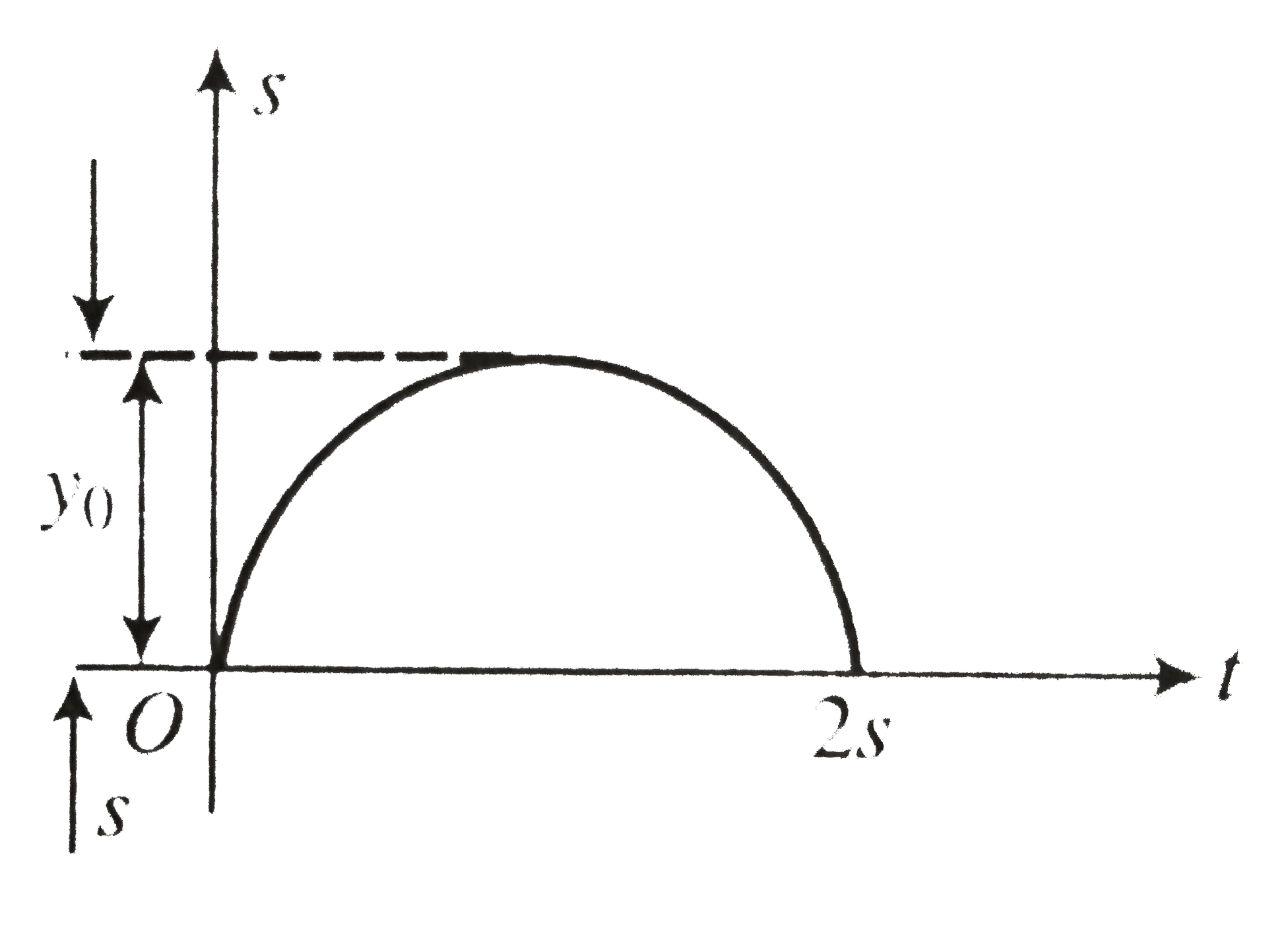The velocity of a particle are given by (4t–2) ms–1 along x–axis. Calculate the average acceleration of particle during the time interval from t = 1 to t = 2s.
To calculate the average acceleration of a particle given its velocity function, we can follow these steps:
Step 1: Understand the given velocity function
The velocity of the particle is given by the equation:
v(t)=4t−2m/s
This function describes how the velocity changes with time.
Step 2: Calculate the velocity at t=2 seconds
Substituting t=2 into the velocity equation:
v(2)=4(2)−2
v(2)=8−2
v(2)=6m/s
Step 3: Calculate the velocity at t=1 second
Now substituting t=1 into the velocity equation:
v(1)=4(1)−2
v(1)=4−2
v(1)=2m/s
Step 4: Calculate the change in velocity
The change in velocity (Δv) from t=1 to t=2 seconds is:
Δv=v(2)−v(1)
Δv=6m/s−2m/s
Δv=4m/s
Step 5: Calculate the change in time
The change in time (Δt) is:
Δt=t2−t1
Δt=2s−1s
Δt=1s
Step 6: Calculate the average acceleration
The average acceleration (aavg) is given by the formula:
aavg=ΔvΔt
Substituting the values we calculated:
aavg=4m/s1s
aavg=4m/s2
Step 7: State the direction of acceleration
Since the velocity is along the x-axis, the direction of the average acceleration is also along the x-axis. Therefore, we can express the final answer as:
aavg=4^im/s2
Final Answer:
The average acceleration of the particle during the time interval from t=1 to t=2 seconds is:
4^im/s2
---
The velocity of the particle is given by the equation:
v(t)=4t−2m/s
This function describes how the velocity changes with time.
Substituting t=2 into the velocity equation:
v(2)=4(2)−2
v(2)=8−2
v(2)=6m/s
Now substituting t=1 into the velocity equation:
v(1)=4(1)−2
v(1)=4−2
v(1)=2m/s
The change in velocity (Δv) from t=1 to t=2 seconds is:
Δv=v(2)−v(1)
Δv=6m/s−2m/s
Δv=4m/s
The change in time (Δt) is:
Δt=t2−t1
Δt=2s−1s
Δt=1s
The average acceleration (aavg) is given by the formula:
aavg=ΔvΔt
Substituting the values we calculated:
aavg=4m/s1s
aavg=4m/s2
Since the velocity is along the x-axis, the direction of the average acceleration is also along the x-axis. Therefore, we can express the final answer as:
aavg=4^im/s2
The average acceleration of the particle during the time interval from t=1 to t=2 seconds is:
4^im/s2
Similar Questions
The intantaneous coordinates of a particle are x=(8t−1)m and y=(4t2)m. Calculate (i) the average velocity of the particle during time interval from t=2s to t=4s (ii) the instantaneous velocity of the particle at t=2s.
View SolutionThe velocity of a particle is given by v=(2t2−3t+10)ms−1. Find the instantaneous acceleration at t = 5 s.
View Solution
Knowledge Check
The position (x) of a particle moving along x - axis veries with time (t) as shown in figure. The average acceleration of particle in time interval t = 0 to t = 8 s is
 A3m/s2B−5m/s2C−4m/s2D2.5m/s2
A3m/s2B−5m/s2C−4m/s2D2.5m/s2The velocity of a particle varies with time as →v=3ˆi+(4−5t)ˆjms−1. Find the average velocity of the particle for a time interval between t=0 and a time when the speed of the particle becomes minimum.
A(3ˆi+2ˆj)ms−1B(6ˆi+5ˆj)ms−1C(4ˆi+ˆj)ms−1D(3ˆi−5ˆj)ms−1
The velocity of a paticle is given by the equation, v=2t2+5cms−1. Find (i) the change in velocity of the velocity of the particle during the time interval between t1=2s and t2=4s (ii) the average acceleration during the same interval and (iii) the instantaneous acceleration at t2=4s.
View SolutionThe velocity time relation of a particle is given by v =(3t2−2t−1)m/s Calculate the position and acceleration of the particle when velocity of the particle is zero . Given the initial position of the particle is 5m .
View SolutionA particle moves rectilinearly possessing a parabolic s-t graph. Find the average velocity of the particle over a time interval from t=12s→t=1.5s.

View SolutionAcceleration of a particle is given by
a=3t2+2t+1
Where t is time . Find
(i) its velocity at time t assuming velocity to be 10 m/s at t = 0.
(ii) its position at time t assuming that the particle is at origin at t = 0.
(iii) What is the average speed of the particle in the duration t = 0 to t = 1s?
(iv) What is the average acceleration of the particle in the duration t = 0 to t = 1s?
View SolutionThe acceleration of particle varies with time as shown.

(a) Find an expression for velocity in terms of t.
(b) Calculate the displacement of the particle in the interval from t=2s to t=4s. Assume that v=0 at t=0.
View SolutionIf the velocity of a paraticle moving along x-axis is given as v=(4t2+3t=1)m/s then acceleration of the particle at t=1sec is :
View Solution

